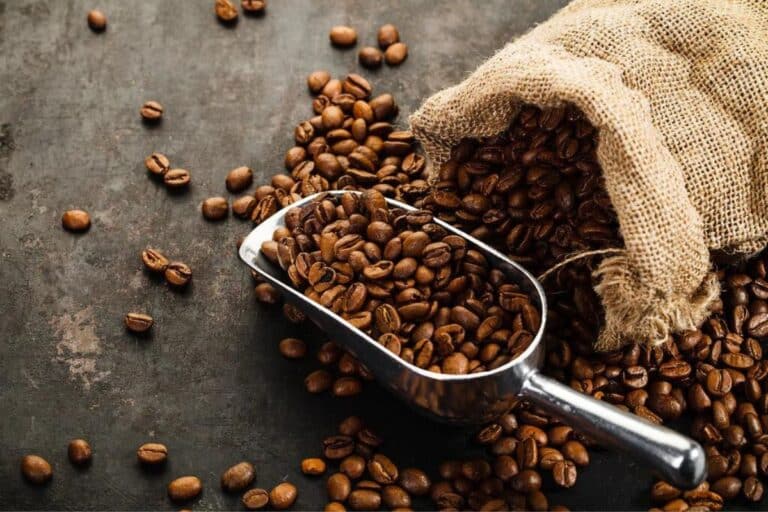Coffee stands as one of the world’s most beloved beverages, deeply ingrained in the cultural fabric and daily routines of millions across the globe. Its journey from the lush fields of the equatorial belt to the cups of consumers in bustling cities and quiet towns alike is a testament to its universal appeal and cultural significance. As a cornerstone of social gatherings, a stimulant to kickstart the day, and a subject of meticulous craft in the hands of baristas, coffee’s global footprint is undeniable.
Amidst the vast diversity of coffee experiences, the concept of coffee blends represents a fascinating intersection of art, science, and tradition. A coffee blend, in its essence, skillfully combines beans from different origins, varieties, and roast levels to create a harmonious and complex beverage that is greater than the sum of its parts. This practice, rooted in centuries-old traditions, allows roasters to craft unique flavor profiles, balance acidity and body, and achieve consistency that single-origin coffees, which highlight the distinct characteristics of a single type of bean from a specific locale, might not offer.
Coffee blends are not just a testament to the roaster’s skill but also a reflection of changing consumer tastes and the ever-evolving landscape of coffee culture. They embody the creativity and innovation that fuel the industry, offering drinkers a spectrum of flavors and experiences. From the rich and bold espresso blends designed to cut through milk in lattes and cappuccinos, to the bright and light breakfast blends meant to uplift and energize, coffee blends cater to every palate and preference.
As we delve deeper into the world of coffee blends, we uncover the meticulous craft behind blending, the objectives that drive this practice, and the vast array of choices available to consumers. The journey through the art and science of coffee blending not only enhances our appreciation for this beloved beverage but also invites us to explore the diverse and rich flavors that coffee blends have to offer.
What is a Coffee Blend?
A coffee blend is a combination of coffee beans from different origins, varieties, or roast levels mixed together to create a specific flavor profile. The goal of blending is often to balance flavors, achieve a certain taste complexity, or maintain consistency in flavor over time. The art of blending coffee involves selecting beans that complement each other, so the final product has a balanced acidity, body, and flavor.
Understanding Coffee Blends

Definition of a Coffee Blend
A coffee blend is a carefully crafted mix of coffee beans from different origins, varieties, or roast levels, combined into a single product. This blend is designed to create a unique flavor profile that cannot be achieved with single-origin coffee alone. The art of blending involves selecting complementary beans that, when combined, produce a desired taste, aroma, body, and acidity, thereby offering a complex and balanced cup of coffee.
The Difference Between Single-Origin Coffee and Blends
The primary distinction between single-origin coffees and coffee blends lies in their source and flavor complexity.
- Single-Origin Coffee is sourced from a single location, which can be a specific country, region, or even a single farm. This type of coffee is prized for its ability to highlight the unique characteristics and flavor profiles intrinsic to its origin. Single-origin offerings provide insight into the specific taste notes, such as floral, fruity, or earthy, attributed to their geographic location, climate, and cultivation practices.
- Coffee Blends, on the other hand, are the result of combining beans from multiple origins. The goal of a blend is to create a coffee that offers a balanced and consistent flavor, often combining the best attributes of its components. Blends can provide a more rounded taste experience, with layers of flavor and aroma that single-origin coffees may not offer.
Reasons Roasters Create Blends
Roasters are motivated by several objectives when creating coffee blends, each aiming to meet the diverse needs and preferences of coffee drinkers:
- Consistency: One of the primary reasons for blending coffee is to achieve a consistent flavor profile. Coffee crops can vary from season to season due to changes in weather, altitude, and cultivation practices. By blending beans, roasters can maintain a consistent taste for their coffee offerings year-round, ensuring customers always know what to expect from their favorite blend.
- Complexity and Balance: Blends allow roasters to craft a coffee that balances acidity, sweetness, body, and bitterness in a way that single-origin coffees may not be able to achieve alone. By combining beans with different characteristics, roasters can create complex flavor profiles that appeal to a wide range of palates.
- Cost-effectiveness: Blending can also be an economical choice for roasters. High-quality, rare, or expensive beans can be blended with more affordable varieties to create a premium coffee experience at a more accessible price point, allowing roasters to cater to a broader market.
- Signature Offerings: Creating unique blends allows roasters and coffee shops to offer signature products that distinguish their brand in a competitive market. These signature blends can reflect the roaster’s philosophy, craftsmanship, and commitment to quality, building loyalty and recognition among consumers.
Through blending, roasters skillfully navigate the complexities of flavor, aroma, and body to craft coffees that meet specific goals and delight the senses, making coffee blends a central pillar of the coffee industry’s offerings.
The Components of Coffee Blends
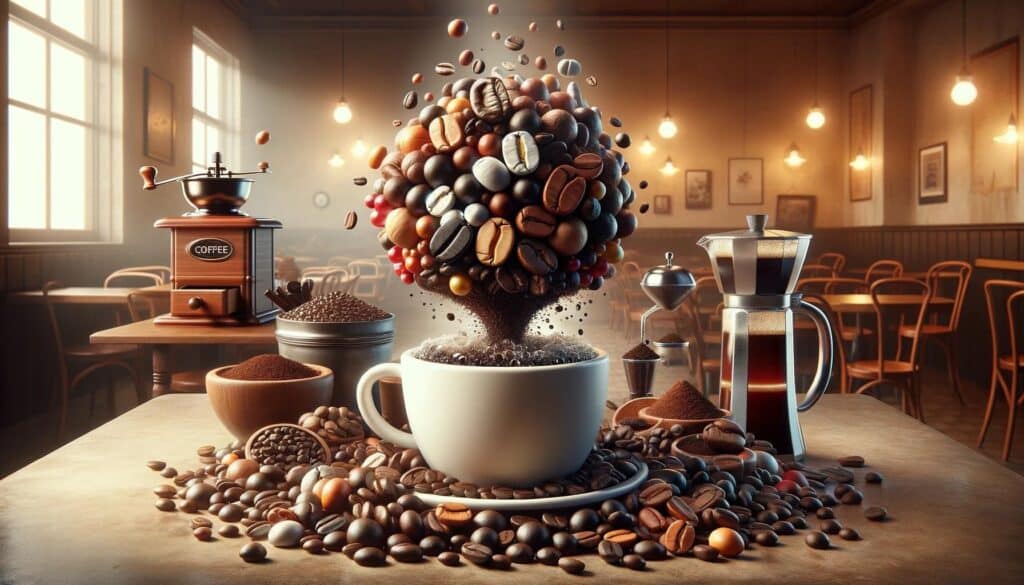
Types of Beans Used in Blends (Arabica vs. Robusta)
Coffee blends often consist of two primary species of coffee beans: Arabica and Robusta, each bringing distinct characteristics to the blend.
- Arabica Beans: Known for their smooth, complex flavor profiles, Arabica beans are favored for their wide range of flavors, which can include hints of fruit, sugar, and berries, with a higher acidity compared to Robusta. Arabica beans are typically grown at higher altitudes, which contributes to their flavor complexity. Due to their preferred growing conditions and the care required in cultivation, Arabica beans are generally more expensive and are often used in specialty coffee blends.
- Robusta Beans: Robusta beans are valued for their strong, robust flavor and a higher caffeine content than Arabica beans. They often have a more bitter and earthy taste, with a grain-like overtone and nutty aftertaste. Robusta is easier to cultivate, more resistant to pests and diseases, and typically yields a higher crop output, making it a more economical option. Robusta beans are commonly used in espresso blends for their rich crema and full-bodied flavor.
The Role of Bean Origin in Flavor Profile
The origin of the coffee bean plays a crucial role in determining the flavor profile of a coffee blend. Beans from different regions come with unique taste notes influenced by the local climate, soil composition, and altitude, among other factors.
- Latin America: Coffee from this region is known for its balanced acidity and a clean taste, often with hints of nuts and cocoa.
- Africa: African beans, particularly those from Ethiopia and Kenya, are prized for their floral and fruity notes, with a bright acidity.
- Asia and Indonesia: Beans from these areas tend to have a fuller body, with earthy, woody, and sometimes spicy flavors.
Blenders carefully select beans from various origins to create a desired flavor profile, balancing acidity, sweetness, body, and complexity.
Impact of Roast Levels on Blends
Roast level significantly affects the taste and aroma of the final coffee blend. The roasting process alters the chemical and physical properties of green coffee beans, influencing the flavor, acidity, body, and color of the coffee.
- Light Roasts: Preserve the unique characteristics of the bean’s origin, highlighting acidity and offering a more complex flavor profile. These roasts are ideal for single-origin beans but can also be used in blends to introduce brightness and fruitiness.
- Medium Roasts: Offer a balance between the bean’s inherent flavors and the flavors developed during roasting, producing a well-rounded and more body-focused coffee. This roast level is commonly used in blends to achieve a harmonious taste.
- Dark Roasts: Characterized by their bold, rich flavors with reduced acidity. The roasting process at this level brings out bittersweet chocolate notes, smokiness, and sometimes caramelization flavors. Dark roasts are often used in blends for their strong flavor and full body, making them a popular choice for espresso blends.
By adjusting the roast level, coffee blenders can manipulate the flavor profile of the blend, accentuating certain characteristics while muting others, to create a balanced and appealing coffee experience for a wide range of preferences.
The Art and Science of Blending Coffee
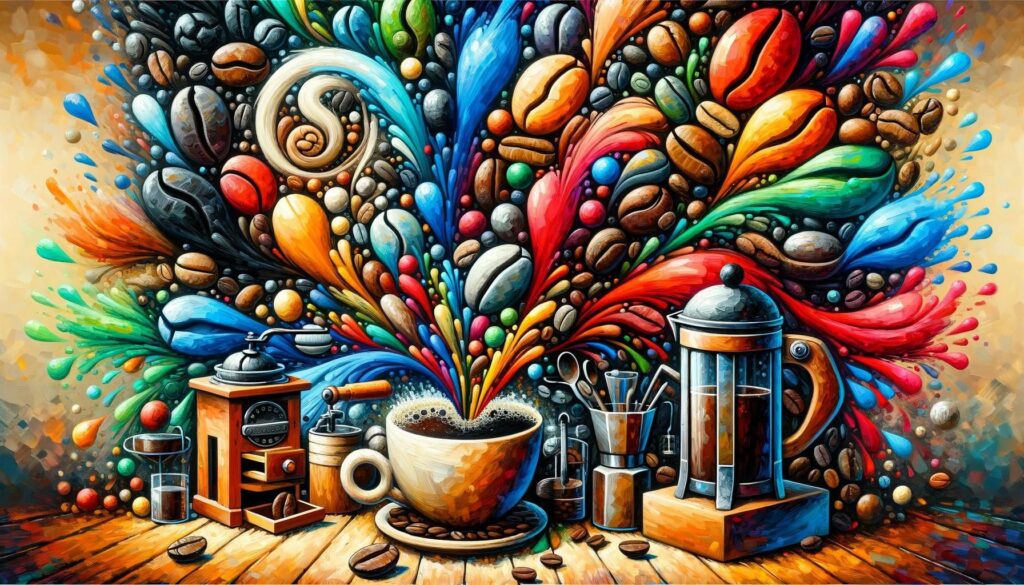
Blending coffee is both an art form and a scientific endeavor, requiring a deep understanding of coffee beans’ individual characteristics and how they interact when combined. The process involves careful selection, meticulous roasting, and continuous tasting to achieve the perfect balance of flavors. Below, we explore the objectives behind blending, the strategies employed, and the detailed process that leads to the creation of a harmonious coffee blend.
Objectives Behind Blending
- Balancing Flavors: The primary goal of blending is to produce a coffee that offers a balanced and complex flavor profile, combining the strengths of different beans to achieve a harmonious taste. Blending allows for the smoothing out of harsh flavors and the enhancement of desired notes, such as sweetness, acidity, or body.
- Consistency: Coffee crops can vary significantly from year to year and season to season. Blending helps roasters maintain a consistent product, ensuring that customers receive the same taste experience with each purchase, regardless of external factors.
- Cost-effectiveness: By mixing high-quality beans with more affordable options, roasters can create a product that offers great taste at a more accessible price point, making quality coffee available to a broader audience.
Commonly Used Blending Strategies
- Pre-Roast Blending: Involves mixing different green (unroasted) beans before roasting them together. This strategy allows for a uniform roast level across all components of the blend, leading to a cohesive flavor profile. However, it requires precise knowledge of how each bean type reacts to roasting to prevent under or over-roasting certain components.
- Post-Roast Blending: Beans are roasted separately according to their individual needs and then combined into a blend. This method offers more control over the final flavor profile, allowing roasters to highlight specific characteristics of each bean type. It is particularly useful when blending beans that require significantly different roast levels.
The Process of Creating a Blend
- Selection: The first step involves selecting the beans that will comprise the blend. Roasters consider factors such as bean size, density, and flavor profile, aiming for beans that complement each other.
- Roasting: Depending on the blending strategy (pre-roast vs. post-roast), beans are either roasted together or separately. Roasters must carefully monitor the roast to achieve the desired flavor, acidity, and body.
- Tasting: After roasting, the blend undergoes cupping (a standardized tasting procedure) to evaluate its flavor profile. This step is crucial for ensuring that the blend meets the intended goals of balance and complexity.
- Adjusting: Based on the tasting results, the blend may be adjusted by altering the ratio of beans, changing the roast level, or substituting different beans. This iterative process continues until the blend meets the roaster’s standards.
The creation of a coffee blend is a testament to the roaster’s expertise and creativity, requiring a delicate balance between art and science. By carefully selecting, roasting, and blending beans, roasters craft unique coffee experiences that cater to a wide range of tastes and preferences, demonstrating the depth and diversity of coffee as a culinary art form.
Popular Types of Coffee Blends
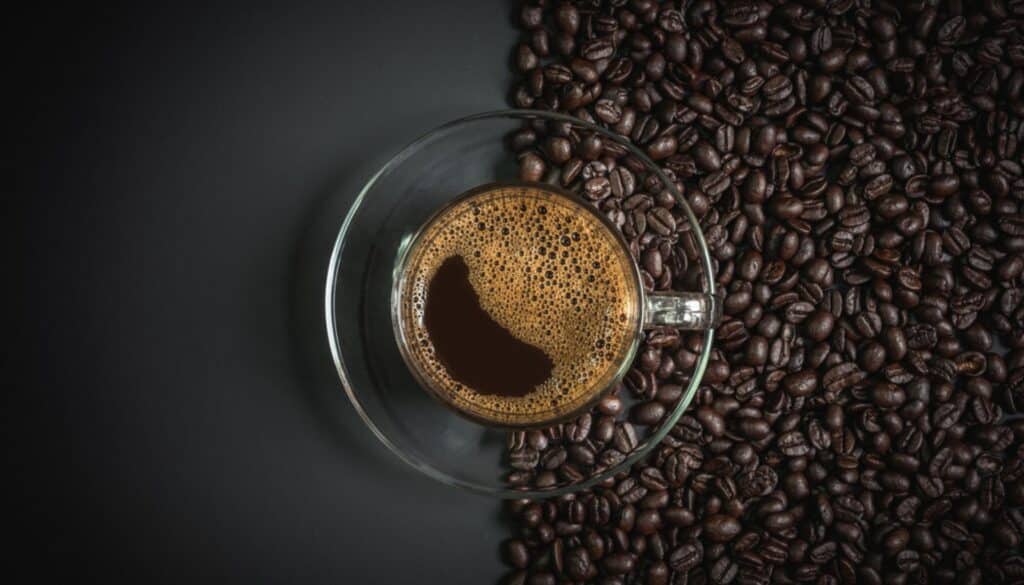
Coffee blends come in various forms, each crafted to suit different preferences and occasions. Among the most popular types of coffee blends are breakfast blends, espresso blends, and seasonal blends. These blends are designed with specific goals in mind, from providing a gentle wake-up call to delivering a robust flavor profile that complements the time of year.
Breakfast Blends: Light and Bright to Start the Day
- Characteristics: Breakfast blends are typically light to medium roast coffees designed to offer a smooth, approachable cup that’s easy to enjoy first thing in the morning. These blends prioritize brightness, mild acidity, and a clean finish to gently awaken the senses without overwhelming the palate.
- Bean Selection: Often made with high-quality Arabica beans known for their nuanced flavor profiles, these blends combine beans from multiple origins to achieve a balanced and harmonious taste.
- Ideal For: Those looking for a pleasant and unassuming cup of coffee to start their day. Breakfast blends pair well with a wide range of breakfast foods, from sweet pastries to hearty savory dishes, without dominating the flavor experience.
Espresso Blends: Crafted for Strength and Creaminess
- Characteristics: Espresso blends are darkly roasted to produce a coffee that’s strong, rich, and full-bodied, with a creamy texture and a lingering finish. These blends are specifically designed to perform well under the high pressure of espresso machines, producing a consistent and satisfying crema.
- Bean Selection: These blends often mix Arabica beans for their flavor complexity with Robusta beans for their body and crema-producing qualities. The result is a robust blend that can cut through milk in lattes and cappuccinos while still offering a deeply satisfying standalone espresso shot.
- Ideal For: Coffee enthusiasts looking for a potent and flavorful coffee experience. Espresso blends are perfect for crafting a wide range of espresso-based drinks, offering both strength and versatility.
Seasonal Blends: Celebrating Flavors of the Season
- Characteristics: Seasonal blends take inspiration from the time of year, incorporating beans that highlight the season’s best qualities. These blends might feature lighter, floral notes in the spring, bright and fruity notes in the summer, warm and spicy notes in the autumn, and rich, comforting notes in the winter.
- Bean Selection: The beans selected for seasonal blends are often sourced to reflect the current season’s mood and are chosen for their ability to harmonize with seasonal foods and festivities.
- Ideal For: Coffee drinkers who enjoy variety and seasonal themes in their beverages. Seasonal blends are a wonderful way to explore new flavors and to celebrate the nuances of each time of year through coffee.
Each of these popular coffee blends offers a unique taste experience designed to suit different preferences and moments. Whether you’re easing into your morning, seeking a vigorous boost, or savoring the flavors of the season, there’s a coffee blend out there that’s perfect for the occasion.
How to Choose and Enjoy a Coffee Blend

Selecting the right coffee blend can elevate your coffee experience from ordinary to exceptional. Understanding your preferences, knowing how to read coffee labels, and mastering the art of brewing can significantly impact the enjoyment of your coffee. Additionally, pairing coffee with the right food can enhance both the coffee and the food’s flavors. Here’s a guide to help you navigate these aspects.
Tips for Selecting a Coffee Blend
- Understand Your Preferences: Begin by identifying what you enjoy in a coffee. Do you prefer a light, medium, or dark roast? Are you drawn to certain flavors, such as fruity, chocolatey, or nutty notes? Knowing what you like will help narrow down your choices.
- Reading Labels: Coffee labels can provide a wealth of information about the blend, including the origin of the beans, roast level, and flavor notes. Look for details about the bean type (Arabica, Robusta, or a mix), the roast date (fresher is usually better), and any tasting notes provided by the roaster.
- Roast Date: Coffee is best enjoyed within a few weeks of its roast date. Fresher coffee will give you a more vibrant and nuanced flavor profile.
- Experiment: Don’t be afraid to try new blends. Experimenting with different coffee blends can be a delightful way to discover new favorites and expand your coffee palate.
Best Practices for Brewing Blended Coffee at Home
- Choosing the Right Brewing Method: Different brewing methods can highlight various aspects of a coffee blend. For example, a French press can accentuate body and mouthfeel, while a pour-over can showcase acidity and clarity. Consider what aspects of the coffee you’d like to emphasize when selecting your brewing method.
- Grind Size: Match the grind size to your brewing method. A finer grind is suitable for espresso and Aeropress, while a coarser grind works better for French press and cold brew. Proper grind size ensures optimal extraction.
- Water Quality: Use clean, filtered water at the right temperature (between 195°F and 205°F) to avoid off-flavors. Water quality can significantly impact the taste of your coffee.
- Proper Ratios: Start with recommended coffee-to-water ratios and adjust to your taste. A general guideline is about 1 to 2 tablespoons of coffee for every 6 ounces of water, but this can vary based on the method and personal preference.
Pairing Coffee Blends with Food
- Complementary Pairing: Choose foods that complement the flavor profile of your coffee blend. For instance, a dark roast with chocolate notes pairs well with chocolate desserts, while a light roast with fruity notes can complement a fruit tart.
- Contrasting Pairing: For a more adventurous experience, try contrasting pairings that highlight the differences between the coffee and the food. A bright, acidic coffee could cut through the richness of a creamy dessert, providing a balanced experience.
- Consider the Time of Day: Morning coffee pairings might differ from afternoon or evening pairings. Breakfast blends go well with morning pastries, while a full-bodied espresso blend might be better suited to an after-dinner dessert.
By understanding your preferences, selecting the right blend, mastering the brewing process, and thoughtfully pairing coffee with food, you can significantly enhance your coffee experience. Each cup of coffee offers an opportunity to explore new flavors and savor the moment.
The Future of Coffee Blends
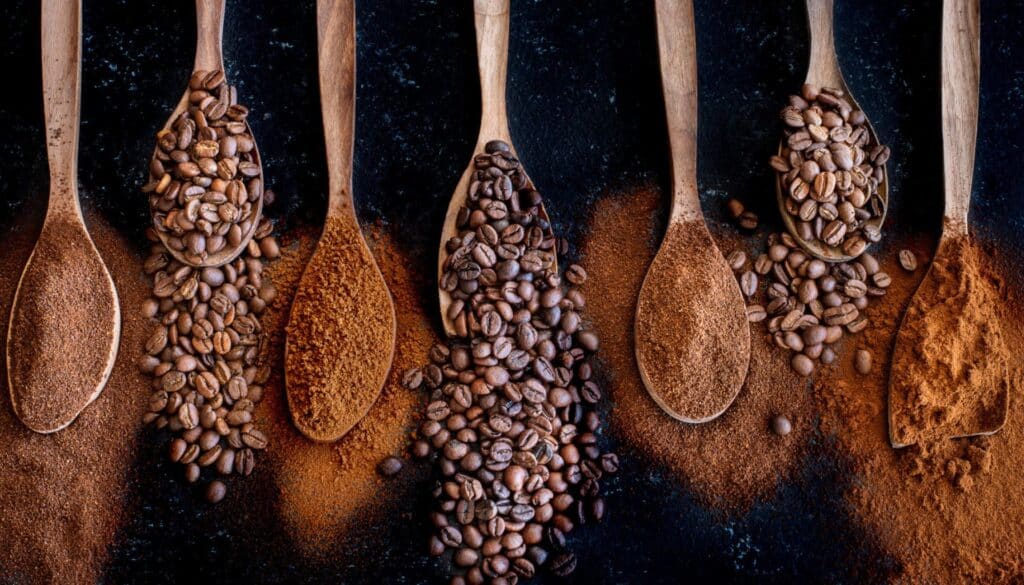
The coffee industry is continuously evolving, with trends in coffee blending increasingly influenced by sustainability, traceability, consumer preferences for unique and innovative flavors, and a growing awareness of ethical practices. These trends not only shape the future of coffee blends but also reflect broader shifts in consumer values and expectations.
Trends in Coffee Blending
- Sustainability: As environmental concerns become more prominent, there’s a growing demand for coffee blends that prioritize sustainability. This includes sourcing beans from farms that practice sustainable agriculture, such as shade-grown coffee or organic farming methods. Roasters are also focusing on minimizing waste and reducing their carbon footprint throughout the production process.
- Traceability: Consumers are increasingly interested in the story behind their coffee — where it comes from, who grows it, and how it’s processed. Traceability in coffee blending allows consumers to ensure that their coffee is ethically sourced and farmers are fairly compensated. This has led to a rise in direct trade practices, where roasters buy straight from the growers, ensuring transparency and fairness.
- Innovative Flavors: The quest for unique and innovative flavors is driving experimentation in coffee blending. Roasters are exploring the use of beans from new origins, experimenting with fermentation processes, and blending beans in novel ways to create unprecedented flavor profiles. This innovation extends to how coffee is served, with blends designed specifically for cold brew or nitrogen infusion.
How Changing Consumer Preferences are Shaping Blends
- Desire for Authenticity and Quality: Today’s consumers are more knowledgeable about coffee and are seeking authentic, high-quality experiences. This has led to a greater emphasis on artisanal blends and single-origin coffees that offer unique tasting experiences. Roasters are responding by creating blends that highlight the distinct characteristics of their component beans, rather than masking them.
- Health and Wellness Trends: The health and wellness movement is influencing coffee blending, with a demand for blends that align with consumers’ health goals. This includes low-acid blends for those with sensitive stomachs, blends with added functional ingredients like mushrooms for wellness benefits, and the use of natural processing methods to preserve the coffee’s healthful properties.
- Personalization and Customization: With the rise of digital platforms and advanced technology, consumers are increasingly looking for personalized coffee experiences. This trend is leading to the development of customizable blends, where consumers can select the origin, roast level, and flavor profile of their beans, tailoring their coffee to their exact preferences.
The future of coffee blends is marked by a conscientious approach to production and an adventurous spirit in flavor creation. As consumers become more sophisticated and values-driven in their coffee consumption, the industry will continue to innovate, ensuring that coffee not only tastes good but also does good for the planet and its people. This evolution promises an exciting and dynamic future for coffee lovers worldwide, with a wealth of new experiences and flavors to explore.
Conclusion
Exploring coffee blends takes us into a world where old traditions meet new innovations, and the skill of mixing different beans turns the simple coffee bean into a huge variety of flavors that can please anyone. Coffee blends show off the creativity and skill of roasters who carefully pick and mix beans to create a perfect balance of tastes. They make sure every cup of coffee is consistent, complex, and a one-of-a-kind experience.
Coffee blends play a huge role in the world’s coffee culture. They give roasters a chance to show their skills, mix flavors well, and make special drinks that stand out. For us, the drinkers, coffee blends let us try the wide range of coffee flavors from around the globe in just one cup. Whether you love the fresh start a breakfast blend gives, the deep taste of an espresso blend, or the festive feeling of a holiday blend, there’s a coffee blend for every time and mood.
Looking ahead, coffee blending is moving towards being more sustainable, traceable, and innovative in flavors. This shows we’re getting smarter about how coffee affects the planet and we’re working to make that impact good for both the Earth and the people who grow coffee.
There’s an open invitation for all coffee fans to try out different blends. Each blend tells a story, offers a mix of flavors, and brings a new experience. By trying different blends, ways to brew, and things to pair coffee with, coffee lovers can start a personal adventure in the coffee world. This journey can help them find new favorites and deepen their love for this amazing drink.
So, let your curiosity guide you into the vast and tasty world of coffee blends. Whether you’ve loved coffee for years or you’re just starting to dive in, there’s no better time than now to explore all the different tastes and stories coffee blends have to share.
Frequently Asked Questions about Coffee Blends
- What exactly is a coffee blend?
- A coffee blend is a carefully crafted combination of coffee beans from different origins, varieties, or roast levels, mixed together to create a specific flavor profile that offers a balanced and complex taste experience.
- How do I choose the right coffee blend for me?
- Start by considering your taste preferences, such as whether you enjoy light, medium, or dark roasts, and look for blends that highlight those preferences. Reading labels for tasting notes and origins can also guide your selection. Don’t be afraid to experiment with different blends to find what suits your palate best.
- Can you mix coffee blends, or should they be enjoyed as crafted?
- While coffee blends are crafted to offer a specific flavor experience, there’s no rule against mixing them. Experimenting with mixing blends can lead to unique and personalized flavor profiles. However, it’s essential to consider the compatibility of the flavors and roast levels when doing so.
- Are coffee blends or single-origin coffees better?
- Neither is inherently better; it depends on your personal preference. Blends offer consistency and a balanced flavor, while single-origin coffees provide unique tasting experiences that highlight the specific characteristics of their region. Some people prefer the complexity of blends, while others enjoy the distinctiveness of single-origin coffees.
- How do seasonal changes affect coffee blends?
- Seasonal changes can influence the availability of certain coffee beans, leading roasters to adjust their blends accordingly. Additionally, many roasters create special seasonal blends to reflect the flavors and moods of the season, such as using spicier or more robust beans for winter blends and lighter, floral notes for spring blends.
